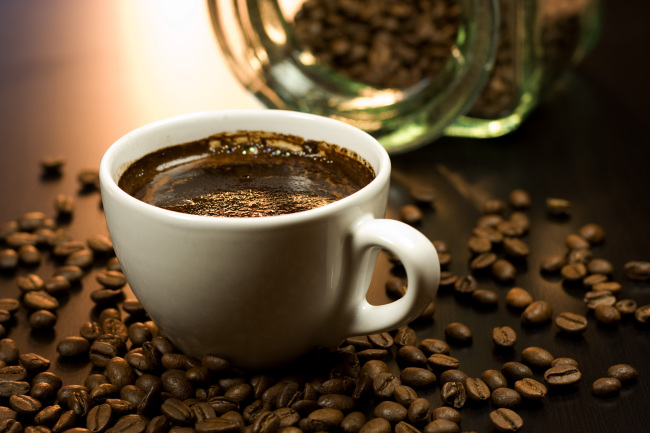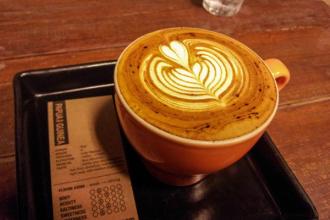Introduction of high-quality coffee with bitter taste in Bolivian coffee manor
Bolivia gained independence in the Latin American War of Independence in the 18th century by Bolivar, a national hero from Caracas, Venezuela, so the country is named after him. August 6, 1825 declared independence from Spain, named the Bolivarian Republic, later changed to its current name in 1932 Bolivia and Paraguay for the North Chaco region of oil resources and outbreak of the Chaco War, Bolivia defeated, lost large areas of territory.
In April 1952, an armed popular uprising broke out, and Paz Estensolo, leader of the nationalist revolutionary movement, became president. Since then, military coups have been frequent and the political situation has been turbulent for a long time. In October 1983, a modern bourgeois democracy with South American characteristics was restored.
Presidential elections were held on 18 December 2005. Evo Morales, leader of the Aymara Indian Movement for Socialism in Bolivia, won the election with 53.75% of the vote and took office on January 22, 2006. He became the first Native American president of Bolivia and the first leftist president of Bolivia. The construction of the Bolivian state, based on progressive communal socialism (i.e. Indian socialism), began.
On January 25, 2009, the 16th Constitution in the history of the Republic of Bolivia and the first Constitution to be adopted by referendum was approved with 61.8% of the votes cast.
On March 26, 2009, Morales signed a supreme decree declaring that the original name of the Republic of Bolivia (República de Bolivia) was changed to "El Estado Plurinacional de Bolivia"(Plurinational State of Bolivia). Founded in 1538, the city was formerly known as Chuquisaca. In 1809, the city broke out the first uprising against Spanish rule in South America. Bolivia declared independence here in 1825. It was designated as the capital in 1826. In 1839, it was renamed Sucre in honor of the second president of Bolivia, General Antonio Jose Sucre. In 1898, the central government, presidential palace and parliamentary hall were moved to Las Vegas. The Supreme Court remained in Sucre. Sucre is now on UNESCO's list of cultural heritage of mankind
Remember that the 2007 winner was Café de Cordillera, whose score was overtaken by the 2008 winner Café de Cordillera, who scored 92.03 points by the international jury, and Takesi Snow Pulse Manor, which scored 93.36 points in 2009, surpassing the 2008 winner and bidding for up to $35.05, the highest bid in 2009 in the CoE competition! Osher has been bidding for Bolivia's champion beans for 3 consecutive years, attracted by her delicate floral, charming sweet vanilla and clean and varied flavors! In 2010, due to a combination of factors, Bolivia decided to cancel the national competition. Looking at this batch of Takesi winning beans, it was a mixed feeling. Takesi is the name of the local indigenous people, the place name and the snow water from the mountains, also called Takesi. After the publication of the CoE final in 2009,Takesi is no longer unknown, proud and excited. Bolivian coffee market:
Bolivian-grown coffee, of which Arabica washed coffee beans are exported to Germany and Sweden, tastes not the best today, but a bit bitter Bolivian coffee characteristics:
Flavor: premium blend coffee
Recommended baking method: medium to deep barbecue
Common Bolivian coffee origin:
Bolivian coffee is grown at altitudes of 180- 670 meters. In the past, Bolivian coffee trees were often planted around gardens as hedges and ornamental plants. Real commercial production began in the early 1950s. Bolivia benefited from the severe frost of 1975, which severely damaged Brazil's coffee industry

Important Notice :
前街咖啡 FrontStreet Coffee has moved to new addredd:
FrontStreet Coffee Address: 315,Donghua East Road,GuangZhou
Tel:020 38364473
- Prev

Introduction to Panamanian Rosa Coffee with hazelnut Flavor and Fine Coffee in Manor area
Panama is located on the Panamanian isthmus in Central America, bounded by Colombia to the east, the Pacific Ocean to the south, Costa Rica to the west and the Caribbean Sea to the north. The territory is S-shaped to connect North and South America, and the Panama Canal connects the Atlantic and Pacific oceans from north to south. It is known as the bridge of the world. [5] Panama has a land area of 75517 square kilometers, a land length of 772km and a width of 60 to 1.
- Next

Introduction to the characteristics of the smooth and soft coffee flavor manor of Kilimanjaro in Tanzania
The types of rainfall can be divided into bimodal distribution and unimodal distribution. The areas with double bee rainfall include the provinces around the Lake Victoria basin, the northeast highlands, the coastal and inland northeastern. The bimodal rainfall area is characterized by two rainy seasons. The short rainy season occurs from September to December. The total rainfall can reach 200-500 mm. The long rainy season occurs from March to May.
Related
- Detailed explanation of Jadeite planting Land in Panamanian Jadeite Manor introduction to the grading system of Jadeite competitive bidding, Red bid, Green bid and Rose Summer
- Story of Coffee planting in Brenka region of Costa Rica Stonehenge Manor anaerobic heavy honey treatment of flavor mouth
- What's on the barrel of Blue Mountain Coffee beans?
- Can American coffee also pull flowers? How to use hot American style to pull out a good-looking pattern?
- Can you make a cold extract with coffee beans? What is the right proportion for cold-extracted coffee formula?
- Indonesian PWN Gold Mandrine Coffee Origin Features Flavor How to Chong? Mandolin coffee is American.
- A brief introduction to the flavor characteristics of Brazilian yellow bourbon coffee beans
- What is the effect of different water quality on the flavor of cold-extracted coffee? What kind of water is best for brewing coffee?
- Why do you think of Rose Summer whenever you mention Panamanian coffee?
- Introduction to the characteristics of authentic blue mountain coffee bean producing areas? What is the CIB Coffee Authority in Jamaica?

